Ribbons 31 Fall 2023
(Journal of the Tanka Society of America)
Italian gelato names
slip off our tongues
so happily—
sweet memory
of that day in Florence

Hai fame?

Ribbons 31 Fall 2023
(Journal of the Tanka Society of America)
Italian gelato names
slip off our tongues
so happily—
sweet memory
of that day in Florence

Hai fame?
~
It’s official now. My newest book has just been published, and I am absolutely thrilled with how beautiful it is. Holding it in my hands for the first time filled me with such emotion. Writing and even publishing individual poems is always exciting, but seeing and reading a collection of your own work is very powerful. The Last Camellia is a collection of tanka, haiku, senryu, haiga and tanka art.
.
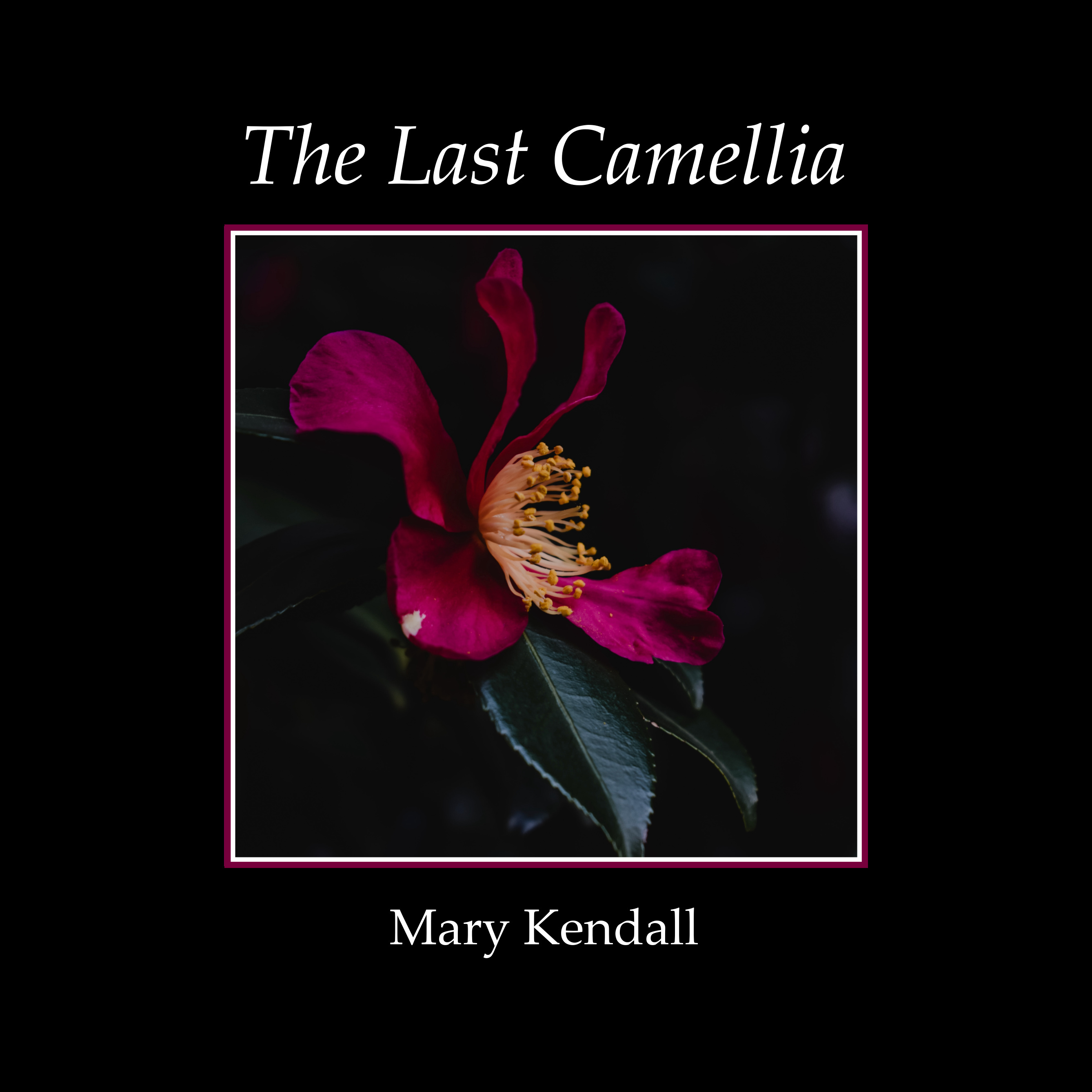
Cover image by Eva Bronzini
.
The book has been published by Velvet Dusk Publishing and edited by Christine L. Villa (Chrissi) who is a splendid tanka and haiku poet. Along with Chrissi, the book was initially shaped into manuscript form by another excellent poet friend, Susan Burch. For a long time, I wanted to put together a book of both tanka and haiku but was unable to figure out how to juxtapose those two forms in a collection. Susan took up the challenge and skillfully and sensitively placed tanka and haiku, senryu, haiga and tanka art into what became the first draft of The Last Camellia. Chrissi and I then worked in editing and polishing the book. This process took a fairly long time despite the poems being so small. Placement of poems is actually a challenging process. We made a few changes of haiga and tanka art because they had to be reproduced in black and white rather than color (color would price the book too high–we both wanted to keep the book affordable).
~

.
Back cover book blurbs:
.
At times we all “stand too close” to ourselves. Beginning with “a childhood spent / in secondhand clothes,” Mary Kendall’s The Last Camellia documents her navigation through grief and the quest to rediscover herself. In doing so, images from the natural world float in and out of her poems like “the soft rustle / of quivering aspen leaves.”
The poet links and shifts three Japanese forms—tanka, haiku, haiga, and tanka art—in a garden of exquisite images. Shadows and silence remain after “a feeling of you / standing behind me.” A red-bellied woodpecker “flaunts his drumming skills.” A newborn faun wobbles “in old-growth grass.”
One cannot fail to notice the sensitive way Mary explores emotions—doubt, loss, sorrow, and the joy of finding oneself. In one revelation, she shows us how “it took sixty years / to find the voice I lost.” Her signature tanka, “the last Camellia,” concludes: “it has taken a lifetime / for me to notice / the beauty in myself.” Each poem is a flower, budding slowly and opening to reveal its fragrance. This is not a book to be skimmed through. It is one to sit with, savour, and quietly celebrate its images of human love and frailty. From this subtle collection, we discover the universal beauty that blossoms in our own souls.
—Hazel Hall, author of Moonlight over the Siding
The Last Camellia is a beautiful compilation of Japanese short-form poetry. Mary Kendall deftly employs poetics and Japanese aesthetics in her work, creating an evocative and engaging collection. Her haiku juxtapose the natural seasons with seasons of her life, true to the heritage of this poetic form. Her tanka, these “short songs,” link and shift from vivid nature imagery to a thoughtful reflection of her inner landscape.
The poet details memories of travels, of grief and loss, and the beauty of imperfection. The subtle sequencing of her work adds depth to the themes she presents, such as in this exemplar: “miscarriage . . . / the very word/betrays / the promise /of hope” to “this haiku abandoned nest / four blue eggs / but no answers.”
The Last Camellia is worth several readings to relish the insights therein.
—Carol Judkins, author of at the water’s edge
~
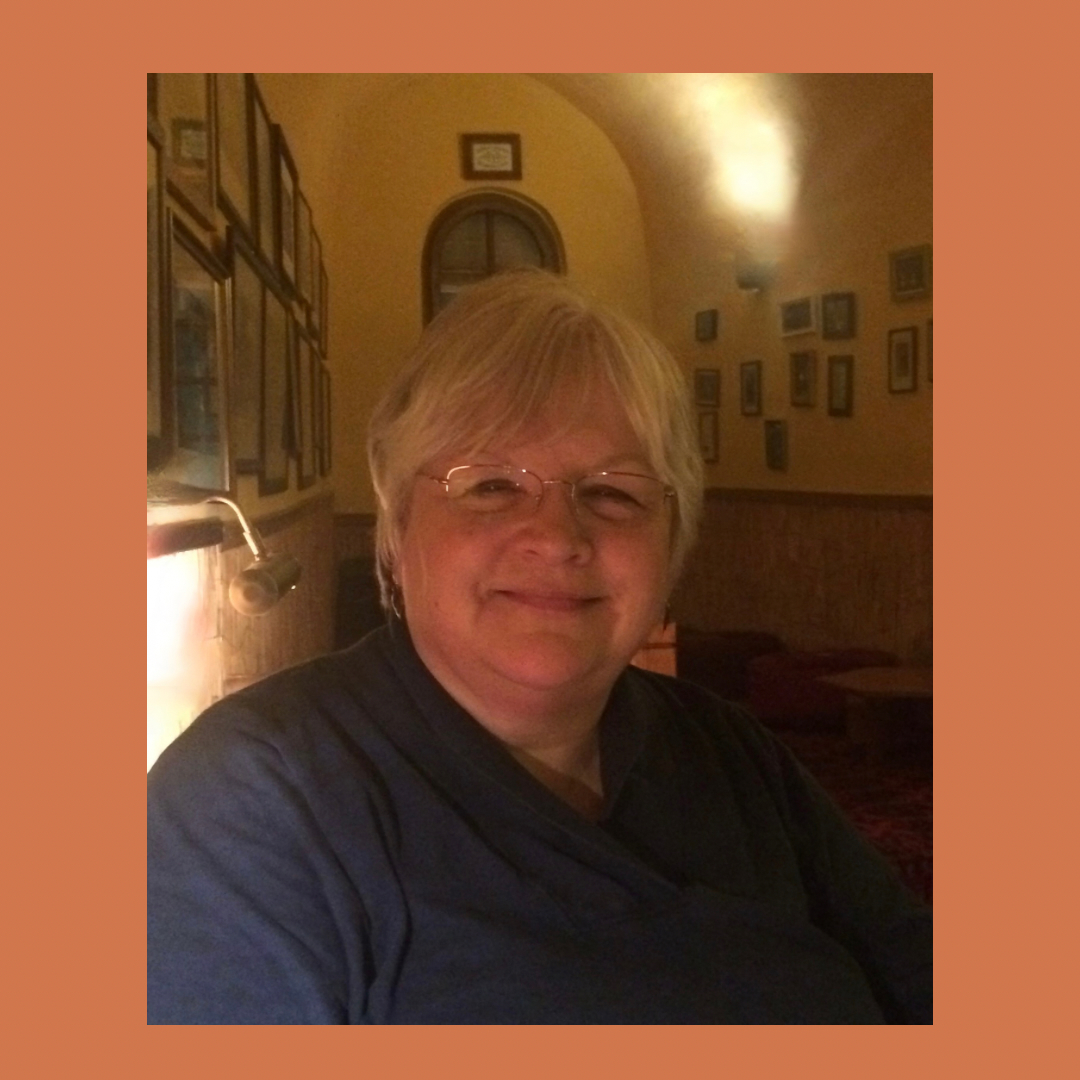
Mary Kendall
Copyright 2023

~ ~ ~
Three tanka published in
Gusts No. 37 Contemporary Tanka, Canada,
Spring/Summer 2023
~
I grow old now
and dream of a journey
I will never take
. . . the aurora borealis
dances, but does it sing?
~
the emptiness
of losing a friend—
never understanding
what I did or
what you felt I did
~
such soaring voices
pure soprano & alto notes
in a boys’ choir
each singer’s gift destined
to change course
~ ~ ~
.
.
Notes:
(1) All tanka by Mary Kendall © 2023
(2) Photo by stein egil liland
https///www.pexels.com/photo/mountain-under-aurora-borealis-9636388/.jpg
.
Ribbons, the journal of the Tanka Society of America is a favorite of all tanka poets. It’s always an honor to have poems accepted for publication. Here are some from the last two issues.
.
.
Ribbons Winter 2023: Volume 19, Number 1
crisp golden leaves
ready themselves for flight
. . . I was just five
when you walked out
and left us all behind
Also, in Ribbons’ Tanka Hangout:
winter winds
wildly whip limbs
boughs & branches –
come closer and hear
my heart hum along
.
Plus a collaboration with Christine L. Villa–her beautiful art and my tanka that was inspired by it:
.
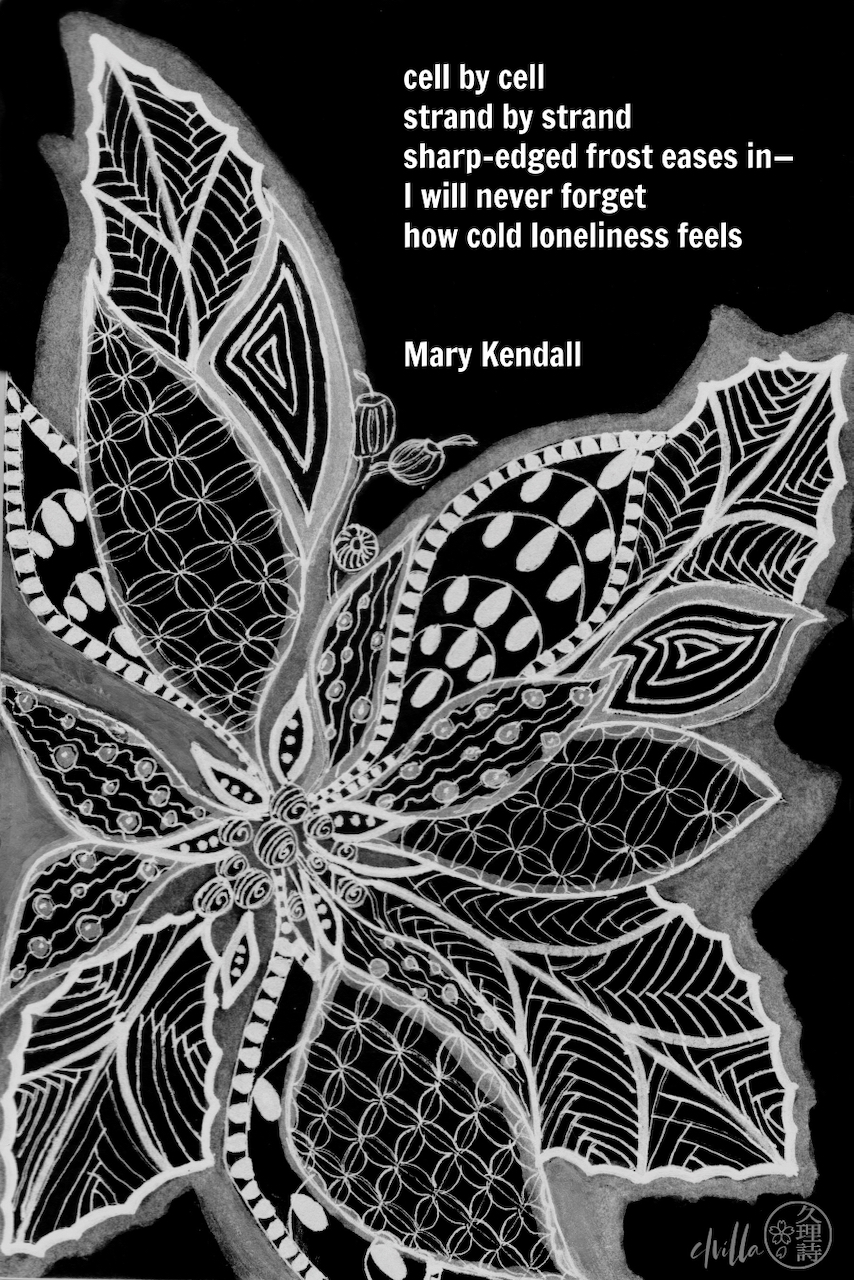
.
Ribbons Fall 2022: Volume 18, Number 3
.
the unmistakable scent
of ripe Anjou pears –
remembering
his low voice as he read
Verlaine aloud
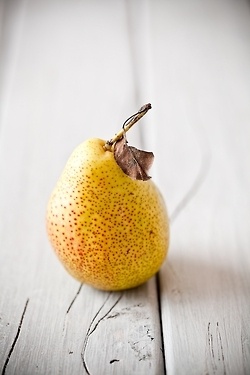
.
‘Tanka Studio’ in Ribbons Fall 2022
.
speaking in an even tone
that gives nothing away,
your inscrutable gaze
was always a challenge
for me to decipher
.
All poems (c)by Mary Kendall
Springtime in Verse is a series of blog posts inviting you to learn and gather around poetry with the Ackland. Today’s featured poet is Mary Kendall.
Mary has shared a selection of her tanka poems in celebration of the Museum’s current exhibition, Lotus Moon and Nandina Staff: The Art of Ōtagaki Rengetsu and Nakahara Nantenbō. Follow our blog throughout the month of April to enjoy more original works by celebrated North Carolina poets. We are so pleased to present to you this exhibition and the original works written by poets from the local community.
plum blossoms—
watching you
struggle for so long
I remember how brief
a season is
all those words
I wish I could forget . . .
the smoothness
of dark pebbles
clutched in my hand
from slabs
of common clay
delicate cups
that hold the scent
of jasmine tea
whistling wings
of Tundra swans
over the marshes
. . . what is this power
you hold over me
past the edge
of darkness, an owl swoops
and grabs a vole
. . . reckoning comes
at lightning speed
the pale twilight
of a hospital room
fading, fading
as you said
your last goodbyes
a soft rain falls
as you work in the garden …
what I’d give to read
the chapters of your life
you never share
stopping to study
fritillaries, tulips
and jonquils –
the sudden way
you take my hand
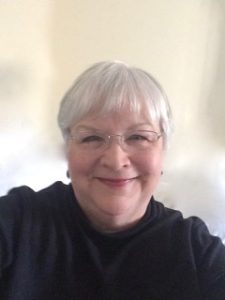
Mary Kendall lives in Chapel Hill, North Carolina. She is a retired reading teacher and the author of two books, A Giving Garden, a children’s poetry/photography book (co-authored with Debbie Suggs) and Erasing the Doubt, a chapbook of free verse (Finishing Line Press, 2015).
In 2023, her third book, The Last Camellia, will be published. It is a collection of both tanka and haiku as well as some haiga.
Mary has a poetry blog called A Poet in Time.
Having written poetry for many years, Mary fell in love with Japanese short form poetry about twelve years ago. Tanka is her great love, a form that feels most natural to her as a lyric and meditative poet, but she loves the challenge and discipline of writing haiku and senryu as well. She creates haiga and tankaand has published a good number of each. Her poetry has been published in many print and online journals such as The Heron’s Nest, Acorn, Modern Haiku, Presence, Blithe Spirit, Eucalypt, Kokako, Wild Plum Journal, A Hundred Gourds, Ribbons, Gusts, Skylark, Failed Haiku, hedgerow, Prune Juice, Under the Basho,and Rattle. Some of her poems have received various honors in poetry contests and one was nominated for the Pushcart Prize.
ABOUT THE EXHIBITION
Lotus Moon and Nandina Staff presents and contrasts the work of two major Japanese artists of the nineteenth and early twentieth centuries, taking its title from translations of their names. Ōtagaki Rengetsu (1791-1875) was a Buddhist nun who became very well known as an important poet focusing on the traditional wakaverse form, rendering her poems in elegant but strong calligraphy on paper and on ceramics that she often formed herself; Nakahara Nantenbō (1839-1925) was an influential and strict Zen Master famous for his energetically and expressively brushed calligraphy and paintings.
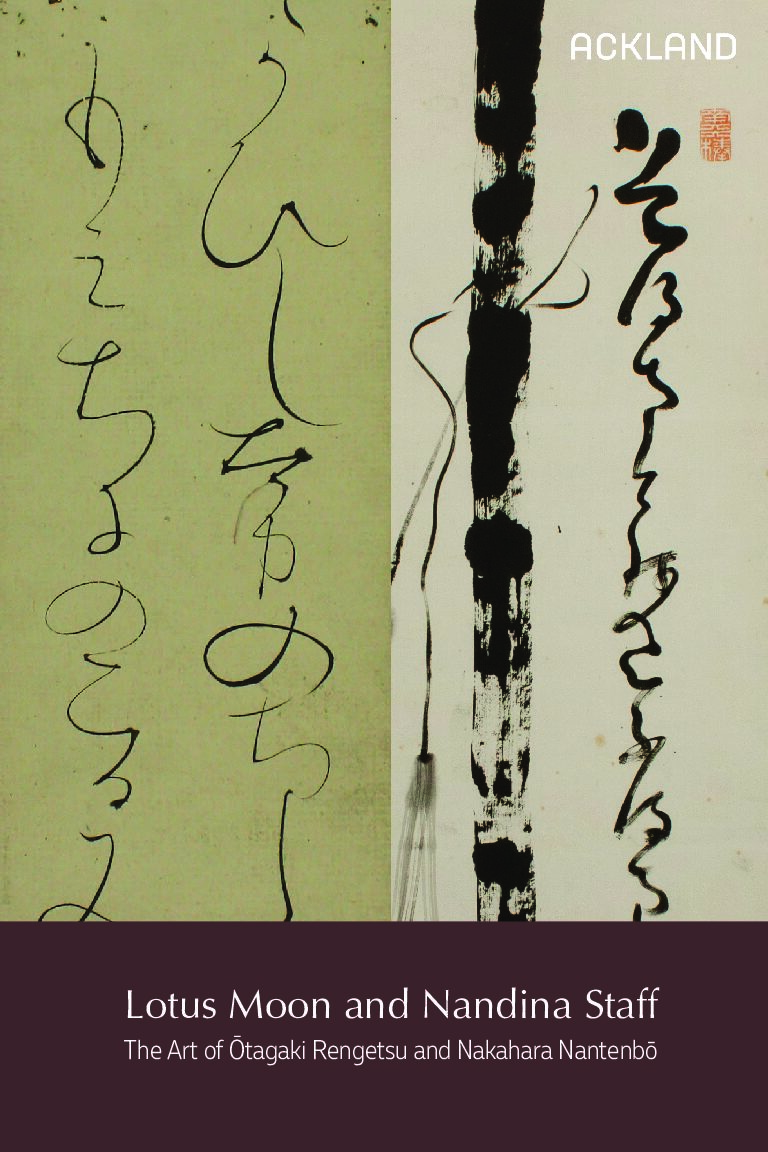
Published in the Spring/Summer 2023 issue of Ribbons,
the Journal of the American Tanka Society
A Tanka Sequence by Mary Kendall
At Giverny
Sunday drive
from Paris
to Giverny . . .
anticipation
half the delight
we stroll through
Monet’s small village
the brilliance of greens
tints of lilac, silver
& old rose
his beloved home
full of color
& memories of children
playing, voices
long forgotten
all these years
together, your steps
in time with mine –
the unexpected scent
of old damask roses
stopping to study
fritillaries, tulips
& jonquils,
you reach out
& take my hand
soon we are adrift
in a huddle of lilac blue
stars of Agapanthus –
our lifetime together,
a flicker in time
~ ~
Author’s note: The French Impressionist painter, Claude Monet, lived with his family in a charming house in Giverny for over forty years. While the house is quite interesting to visit, it is Monet’s beautiful gardens where most visitors want to wander. My husband and I visited Giverny in 2013, and our memories are deeply treasured by both of us.
